After years of developing recipes for five cookbooks and thousands online to fit all varieties of dietary needs, I’ve become familiar with all the tips, tricks, and ingredient swaps, to make allergy-friendly recipes taste delicious.
Any recipe that includes coconut flour in the ingredients is notorious for receiving comments and emails from readers asking for coconut flour substitutes.
Today, I’m sharing everything you need to know, from what exactly coconut flour is made from, why you should consider having it in your panty, how and if it can be substituted, and how to best use it.
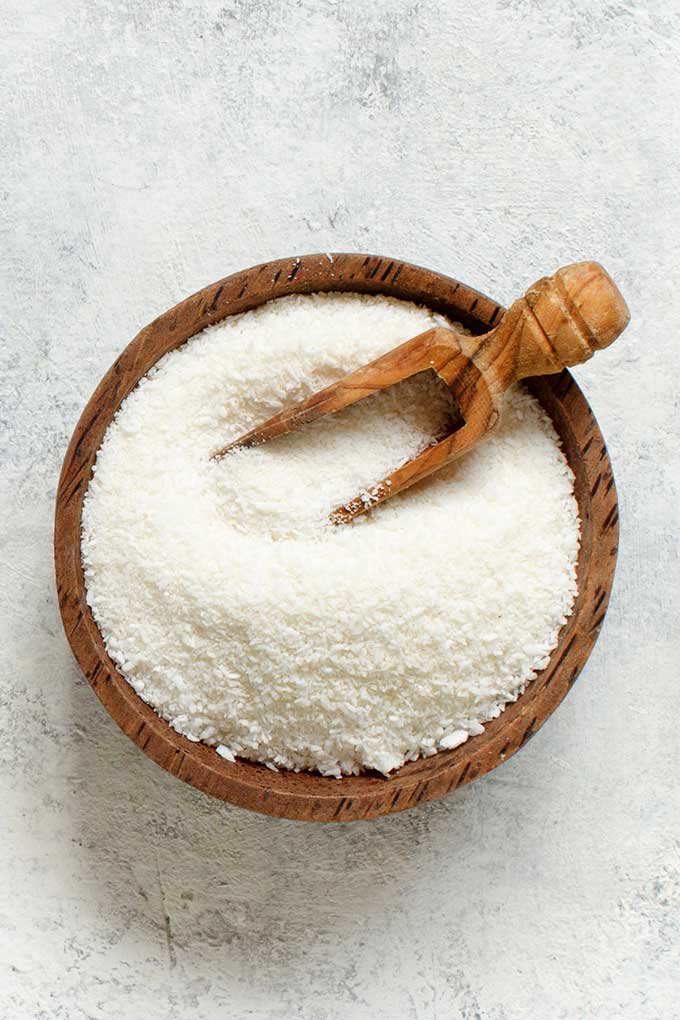
What is Coconut Flour
Unlike traditional flour made from wheat, coconut flour is made from the dried meat (white part) of the coconut fruit by grinding it into a powder with a flour-like texture.
The reason it’s called coconut “flour” is because of its texture and is commonly used in recipes as the dry ingredient, the flour.
This often confuses people into thinking that a recipe that calls for coconut flour can still be made by using another type of flour -and I hope to clear all of this in today’s post for you.
Coconut flour is low in carbs, high in fiber, and fat. It’s most commonly used in gluten-free, paleo, and keto recipes.
Its high fiber content makes it highly absorbent in nature, which is why you see recipes that include coconut flour.
When using coconut flour in a recipe, it cannot be substituted 1:1 with regular wheat flour, almond flour, or any other type of flour.
Coconut Flour Benefits
Coconut flour is rich in vitamins, nutrients, and minerals. Every ¼ cup (30 gram) serving, has 120 calories, 18 grams of carbs, 6 grams of protein, 4 grams of fat, and 10 grams of fiber.
Coconut flour is also a great source of iron and provides 20% of the recommended daily allowance. Given that iron is hard to find in non-meat sources, coconut flour is a great addition to vegetarian diets.
Coconut flour is also a medium-chain triglycerides (MCT) source, which can help in weight loss and improve brain and heart health.
Related: Health Benefits of MCT Oil
Due to its unique nutritional components, can aid in maintaining stable levels of blood sugar, and its fiber-rich content aids in healthy digestion and regulating bowel movements (#2).
Using Coconut Flour in Baking
Similar in texture to other flours, coconut flour is finely ground and soft and is used in baking because of its low carb content, high fiber, high liquid absorption, and it’s naturally gluten-free.
Coconut flour baked goods will often have a more “spongy” and dense texture and recipes often include 2 to 3 eggs plus added liquid.
I’m not going to lie to you; there’s no easy way to substitute coconut flour into a recipe or out of a recipe.
This is because it absorbs 5-8 times more liquid than traditional flour and often needs the addition of extra liquid and eggs. If you aren’t careful, recipes can turn out dry, grainy, and with an overpowering coconut and eggy flavor.
Before you begin making substitutions to your grandma’s incredible bread loaf or muffin recipes, I recommend finding recipes that have been specifically tested with coconut flour.
Coconut Flour Substitutes for Baking
If you can’t eat gluten, you have every ingredient that a recipe calls for already mixed in a bowl, and you’ve just realized you’re out of coconut flour, there are some alternatives you can use.
If you’re a newbie at baking with coconut flour, stop right now. Order some, head to the store, and make the recipe when you have it on hand. If you have all the other wet ingredients already mixed in a bowl, cover them with plastic wrap and refrigerate for up to 3 days. Then continue.
Every recipe developer will tell you that without testing, we cannot guarantee the results when it comes to substituting coconut flour in and out of a recipe.
Here are the top coconut flour substitutes for baking:
- almond flour
- cassava flour
- oat flour
- traditional wheat flour
Remember, the above are not substituted 1:1 for coconut flour. Keep reading and reference the chart below to see estimations.
There will never be a perfect substitute 100% of the time because you’ll need to take into account liquid absorption, the number of eggs in the recipe, along with other chemical reactions that might occur if the recipe calls for baking powder or baking soda and vinegar.
Most recipes that have not been tested with the flour you’re looking to use as a substitute will require a bit of trial and error. So, unless you’re willing to do a little experimenting in the kitchen, you may just want to opt for a different recipe.
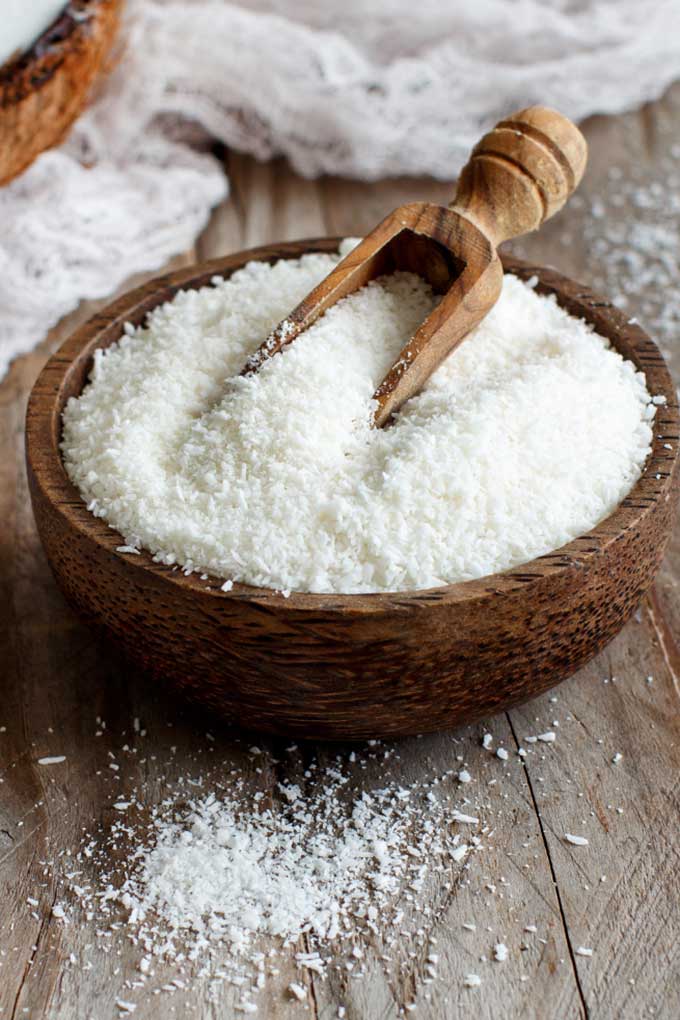
Almond Flour
Arguably the most popular flour substitute, almond flour can be bought in stores or made yourself by grinding almonds in a blender or food processor.
Almonds are not as absorbent as coconut. So, for every ¼ cup of coconut flour, you will need about 1 cup of almond flour.
Related: More information about Almond Flour & it’s substitutes here
Cassava Flour
Hugely popular in the Paleo world, cassava flour comes from ground cassava root. It is soft, powdery, and very similar to wheat flour.
Similar in absorbency to almond flour, 1 cup of cassava flour can be substituted for ¼ cup coconut flour.
However, to avoid any headaches, I recommend skipping the substitution and opting for a recipe made for cassava flour instead, like these Cassava Flour Pancakes.
Oat Flour
Super convenient, gluten-free, and budget-friendly, oat flour can be made at home using dried oats and a blender as shown here. Or, it is easily found in most grocery stores.
To use oat flour, substitute about 1 ¼ cups of oat flour for every ¼ cup of coconut flour.
Coconut Flour Substitute Chart
For easy reference, this coconut flour substitute chart will help you visualize how to replace coconut flour from a recipe.
| Coconut Flour | Almond Flour | Oat Flour | Wheat Flour |
|---|---|---|---|
| ¼ cup | approx. 1 cup | aprrox. 1 ¼ cup | approx. 1 cup |
Coconut Flour Replacement for The Clean Treats Cookbook
I’m going to tell you a secret: my kids do not like coconut flour in baked goods. They complain that it’s spongy, tastes funny, and it’s just “no bueno.”
That said, there are a handful of recipes that use coconut flour to bind the liquid ingredients with the other dry ingredients.
I made sure to keep the quantities relatively small for that purpose and none feel “spongy” or taste like coconut -at least according to my kids.
In other words, they are not coconut-based recipes (there’s a big difference in recipe development with this).
- Pumpkin Spice Coffee Cake: you’ll need a total of 2 cups of almond flour if you’re going to omit the coconut flour (¼c)
- Cookies: gingersnaps and snikernoodles: not noticeable at all. the coconut flour is needed to provide the “soft” and “chewy” texture.
- Almond butter cups: just a bit of coconut flour is mixed with the peanut butter/almond butter to provide the exact texture that reeses cups filing has. You can’t taste it but you can just omit it.
- Chocolate Amond bars: I haven’t found a substitute but again, it’s for texture. I’d skip this recipe.
- Blondies: I haven’t found a replacement. This recipe has had more than 12M visits on my website and to date, no one has complained of the coconut flavor.
- Chocolate Fudge: the recipe only has 2.5 tablespoons and it’s to give it a fudgy texture without using a stick of butter. with the amount of chocolate, it’s not noticeable at all.
- Edible Cookie Dough: I’ve used oat flour in the past (about 2x the amount of coconut flour adjusted quantity little by little in this one). Again, another recipe that is not noticeable or skip.
The great news is that you still have 85+ other recipes in the Clean Treats Cookbook to try without coconut flour.
Clean Treats Cookbook
Healthy and wholesome dessert recipes you’ll want to eat made with clean ingredients you already have on hand.
Grab your copy today!

Is Coconut Flour Keto
Yes! Coconut flour, along with almond flour, is a great way to turn your favorite carb-heavy treats into a delicious keto-friendly recipe. Its high fiber content reduced the number of net carbs in a recipe.
If you’re following a keto or low carb diet and want to use coconut flour in your baked goods, I recommend you search for coconut flour recipes or keto-friendly recipes before you try to substitute it yourself. Those recipes have already been tested with reducing the carb load itself and you’ll achieve far better results than going out on your own.
Recipes Using Coconut Flour
To save you from getting stuck with not-so-great foods, I’m sharing some of my and my family’s favorite failproof recipes with coconut flour.
- Chick-Fil-A Nuggets Copycat Recipe – Just as good if not tastier than the original, your kids are going to love this recipe!
- Easy Paleo Bread – Made with coconut flour and almond flour combined, this Paleo bread is grain-free, easy to make, and a delicious way to enjoy all your favorite sandwiches!
- No-Bake Healthy Chocolate Chip Blondies – The perfect treat with 0 guilt, these chocolate chip blondies are made in a single bowl with coconut flour only.
- Paleo Pumpkin Bread – A delicious, pumpkin spice treat made with a blend of coconut flour and almond flour for the perfectm moist texture.

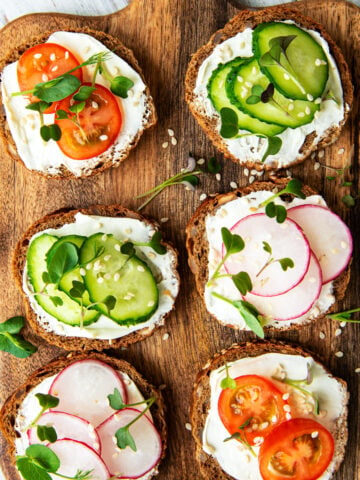
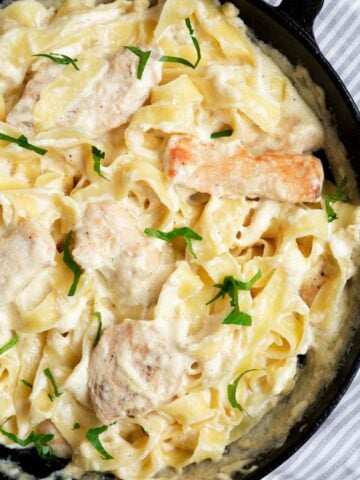
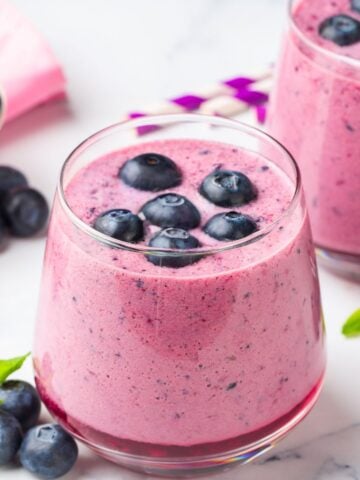
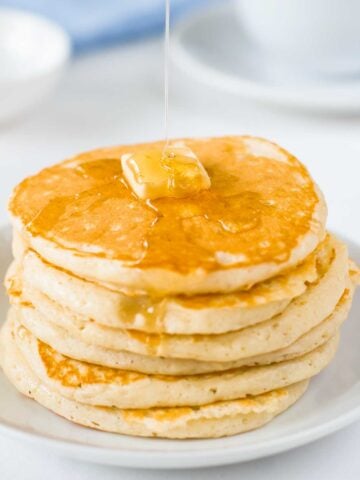
Lisa says
Does coconut flour work well with a flax egg or egg replacer?? My daughter is both gluten sensitive and allergic to eggs … and most of
the coconut flour recipes I’ve seen call for lots of eggs.
Laura Fuentes says
Unfortunately, coconut flour + eggs go hand in hand. Coconut flour is 10x more absorbent and it needs liquid and something to provide elasticity, and eggs provides both. I only recommend using an egg replacer when a recipe calls for 2 or fewer eggs. My suggestion would be to look for recipes labeled “egg-free” or with < 2 eggs, so you can use an all-purpose gluten-free flour mix.
Maria Botelho says
I have not baked anything with coconut flour so I’m new to this but willing to try and the reason is I’m trying to find alternatives for my grandkids who don’t eat many things with white flour due to allergies on another note…..you got me hooked on “smoothies” Its safe to say I won’t be buying too many cereal boxes in the future Thanks!!!!!!!
Laura Fuentes says
Hi Maria! Thank you for trying my recipes! If you’re looking for coconut flour recipes, I suggest you find recipes specifically developed to use coconut flour instead of substituting it out. Alternatively, my cookbook, Clean Treats Cookbook, is a terrific resource if you have several allergies. All the recipes are marked and you’ll find many you can use.
Rachael says
Great info! Thanks so much:)